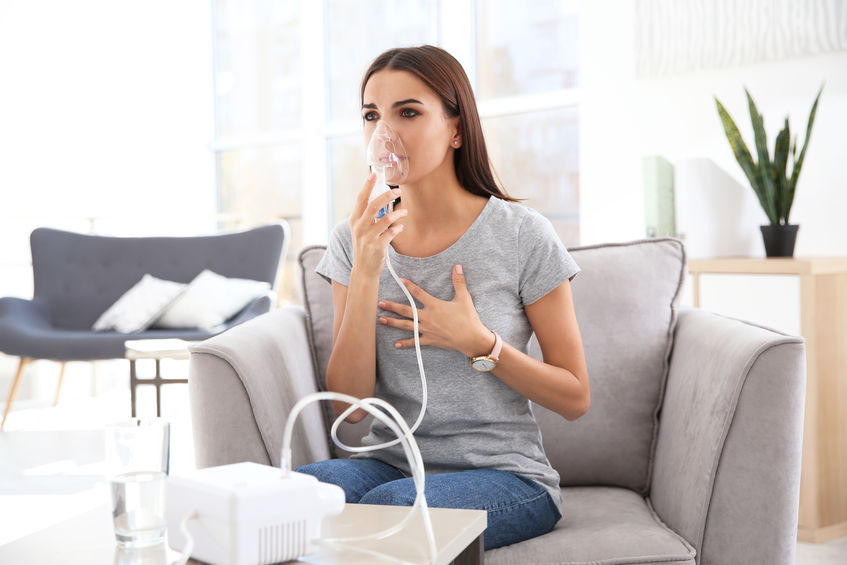“Youth use of tobacco products in any form is unsafe. If cigarette smoking continues at the current rate among youth in this country, 5.6 million of today’s Americans younger than 18 will die early from a smoking-related illness. That’s about 1 of every 13 Americans aged 17 years or younger who are alive today.” – Center for Disease Control and Prevention
 The CDC’s warning is clear: any form of smoking, whether cigarette smoking, e-cigarettes or vaping, increases smoking-related respiratory illness or death. And unfortunately, statistics show that 9 out of 10 cigarette smokers first try smoking by the time they are age 18, which illustrates why intervention in teens is imperative. With many health and government agencies doing all they an to discourage youth away from this dangerous habit through education, tobacco companies are creating products and branding to appeal to young ones. For example, flavorings in tobacco products often make them more appealing to the youth.
The CDC’s warning is clear: any form of smoking, whether cigarette smoking, e-cigarettes or vaping, increases smoking-related respiratory illness or death. And unfortunately, statistics show that 9 out of 10 cigarette smokers first try smoking by the time they are age 18, which illustrates why intervention in teens is imperative. With many health and government agencies doing all they an to discourage youth away from this dangerous habit through education, tobacco companies are creating products and branding to appeal to young ones. For example, flavorings in tobacco products often make them more appealing to the youth.
“In 2018, 67% of high school students and 49% of middle school students who used tobacco products in the past 30 days reported using a flavored tobacco product during that time.” – CDC
Smoking and vaping harm the body as they enter through the mouth and nose, causing damage to the tissue and cells to the lungs and respiratory system. As a result, smoking can cause the following:
- Smoking causes lung diseases, including the majority of cases of chronic obstructive pulmonary disease (COPD).
- Tobacco use makes chronic lung diseases more severe; and increases the risk for respiratory infections.
- After years of exposure to cigarette smoke, lung tissue becomes scarred, loses its elasticity, and can no longer exchange air efficiently.
- Adults who smoked as teenagers can have lungs that never grow to their potential size and never perform at full capacity.

While many youth may feel a false sense of security of vaping over smoking, as they think it’s less harmful or addictive. In reality, e-cigarettes and vaping are just as dangerous, highly addictive and also increases the incidence of cigarette smoking later in life. In recent months, vaping has become quite lethal:
“As of February 18, 2020, a total of 2,807 hospitalized EVALI cases or deaths have been reported to CDC from all 50 states, the District of Columbia, and two U.S. territories (Puerto Rico and U.S. Virgin Islands).” – CDC
Although, there is no concrete way to determine which smokers will develop lung disease, lung cancer, asthma, COPD, or Tuberculosis, we know that the percentage of impaired lung health is too high a risk for our youth to take. With the concern of parents and family, the strain on the healthcare system, the increase of morbidity due to smoking-related illness and the harmful effects of second-hand smoke to the public, there are numerous reasons to prevent adolescent tobacco use and help addicted youth and/or adults break the highly addictive habit.
“There is no risk-free level of secondhand smoke exposure; even brief exposure can be harmful to health. Since 1964, approximately 2,500,000 nonsmokers have died from health problems caused by exposure to secondhand smoke.” – CDC
Proven Methods for Teen Smoking and Vaping Cessation
Most people, especially the youth, may need a combination of resources to help prevent or cease tobacco use. And many will not succeed on the first attempt but will need to be encouraged not to give up on their efforts to quit. Here are some proven methods for young and adult smokers to consider:
Varenicline Tartrate Treatment
 Cigarette smoking is the leading cause of preventable morbidity and mortality in the United States and worldwide, and most tobacco users begin smoking in adolescence. There have been significant advances in efficacious pharmacotherapies that complement smoking cessation counseling in adults, but far less progress has been made in addressing tobacco use in adolescence. A 2-group randomized, placebo-controlled, double-blind study was conducted on adolescents aged 14 to 21 years at an outpatient clinical site in Charleston, South Carolina to evaluate the efficacy and safety of varenicline tartrate for smoking cessation in adolescents and young adults.[i] Subjects were randomized in a 1:1 ratio to a 12-week course of varenicline (n = 77) or placebo (n = 80). All participants received weekly smoking cessation counseling.
Cigarette smoking is the leading cause of preventable morbidity and mortality in the United States and worldwide, and most tobacco users begin smoking in adolescence. There have been significant advances in efficacious pharmacotherapies that complement smoking cessation counseling in adults, but far less progress has been made in addressing tobacco use in adolescence. A 2-group randomized, placebo-controlled, double-blind study was conducted on adolescents aged 14 to 21 years at an outpatient clinical site in Charleston, South Carolina to evaluate the efficacy and safety of varenicline tartrate for smoking cessation in adolescents and young adults.[i] Subjects were randomized in a 1:1 ratio to a 12-week course of varenicline (n = 77) or placebo (n = 80). All participants received weekly smoking cessation counseling.
The primary measurable outcome was urine cotinine levels that were confirmed after a period of 7-day abstinence. Secondary outcomes included weekly abstinence throughout active treatment, abstinence at posttreatment follow-up visits, and time to first 7-day abstinence. The primary safety outcome was the frequency of treatment-emergent adverse events.
Results of the study were unremarkable – the varenicline and placebo groups did not differ in the primary outcome of cotinine-confirmed self-reported 7-day abstinence at the end of treatment. The study concluded that when added to weekly cessation counseling for adolescent cigarette smokers, varenicline, compared with placebo, was well tolerated but did not improve end-of-treatment abstinence.
Education.
Smoking teens statistically have parents that smoke, so for parents, the first step is to set the right example and stop smoking. If the parents are currently working on stopping, the child will benefit from knowing how difficult it is to stop and how the parent wishes they never started. Doctors, social workers and medical professionals all should inquire of their patient’s tobacco and drug-use habits and provide materials to not only educate them on the risks but with proven methods to stop or discourage them from starting. Ensure young ones participate in local and school-sponsored smoking prevention campaigns. By educating young ones on the risk factors via school programs, public service announcements, parental intervention, and guidance from educators, counselors and community leaders, we can decrease the prevalence of smoking and vaping among those aged 18 and under. Also, supporting efforts to make public places smoke-free and increase taxes on tobacco products has proven effective.
While cigarette smoking is on the decline among high school students, vaping usage has increased with 16% of high school students since 2015, so education of the risks has become a hot topic with the increase of adverse lung damage and deaths reported in 2019:
“In fact, by increased public awareness of the risk associated with THC-containing e-cigarette, or vaping, product use as a result of the rapid public health response, there has been a persistent decline in the use of vaping since September 2019.” – CDC
Obviously, the consistent media reports and reports of fatalities caused by vaping has resulted in decreased usage of vaping, thus education is a proven method.
Smoking & Vaping Cessation Programs:
The American Lung Association offers N-O-T (Not On Tobacco), a smoking cessation program that seeks to address the growing problem by giving all teens the resources they need to break their nicotine dependency and find healthier outlets. The program takes a holistic approach with each session using different interactive learning strategies based on Social Cognitive Theory of behavior change that can then be applied and practiced in everyday life and encourages a voluntary change for youth ages 14 to 19. Other programs include:
- Foundation for a TobaccoFree World: tobaccofree.org
- MyQuit™: Quit.com offers cessation products as well
- 1-800-QUIT-NOW: free telephone support service
- CDC’s Tips from Former Smokers: www.cdc.gov
- quitSTART App: The quitSTART app is a free smartphone app (available on Apple or Android) that helps you quit smoking with tailored tips, inspiration, and challenges.
- Smokefree.gov: offers programs for adult, vets, women, teen, in Spanish, and for those 60+.
Understanding Respiratory Failure
 At Respiratoryedu.org, we offer online, affordable CEU courses approved by the American Association for Respiratory Care (AARC) for CRCE credits and courses approved by the Canadian Society of Respiratory Therapists (CSRT) for CPD credits. Our Respiratory Therapists are on the forefront of caring for patients with lung disease (Asthma, COPD, lung cancer, sleep apnea, and lung disease), often caused by smoking and vaping. So our focus is to provide an affordable, convenient online distance learning for Respiratory Therapists (RRT) and Sleep Technologists.
At Respiratoryedu.org, we offer online, affordable CEU courses approved by the American Association for Respiratory Care (AARC) for CRCE credits and courses approved by the Canadian Society of Respiratory Therapists (CSRT) for CPD credits. Our Respiratory Therapists are on the forefront of caring for patients with lung disease (Asthma, COPD, lung cancer, sleep apnea, and lung disease), often caused by smoking and vaping. So our focus is to provide an affordable, convenient online distance learning for Respiratory Therapists (RRT) and Sleep Technologists.
Featured course: Understanding Respiratory Failure (AARC, AAST, CSRT Approved) – AARC CREDIT 1.0 CRCE
Course Description: This course provides an introduction to respiratory failure syndrome. First, a brief review of normal physiology to describe respiratory failure is explained. Additionally, the types of respiratory failure as well as the diseases and conditions that contribute to respiratory failure are explored. To complete the discussion, basic treatments for respiratory failure are explored.
To preview all of our individual courses and discounted packages, please preview our online Distance Learning store.
[i] Gray KM, Baker NL, McClure EA, et al. Efficacy and Safety of Varenicline for Adolescent Smoking Cessation: A Randomized Clinical Trial. JAMA Pediatr. 2019;173(12):1146–1153. doi:10.1001/jamapediatrics.2019.3553








